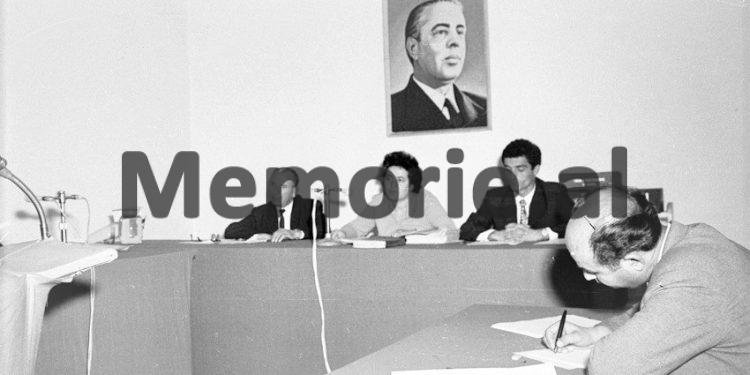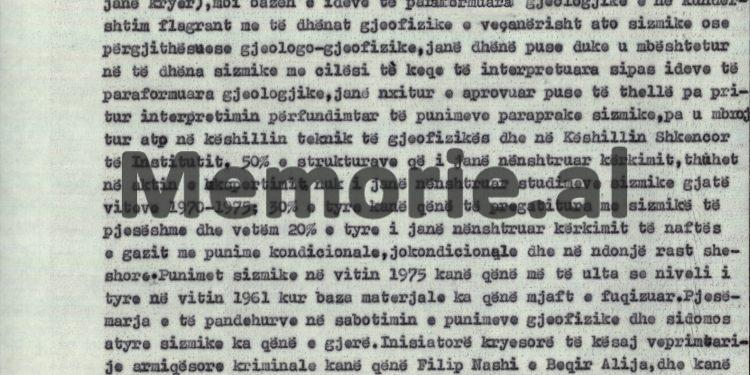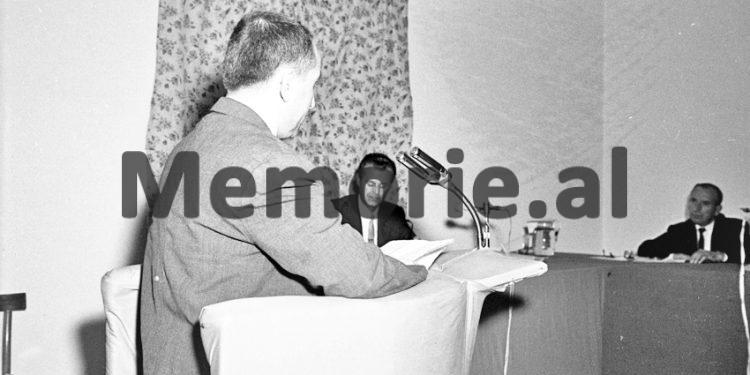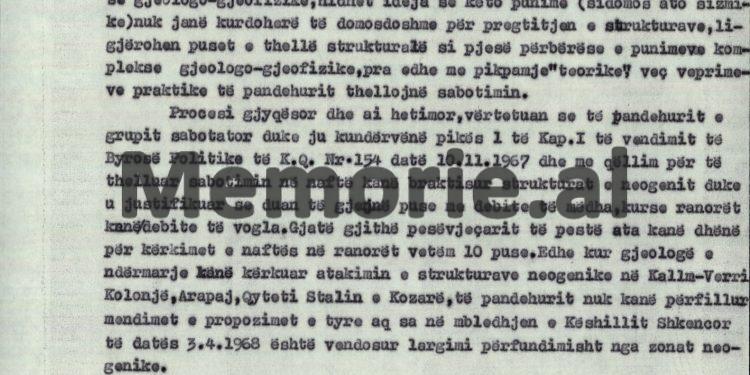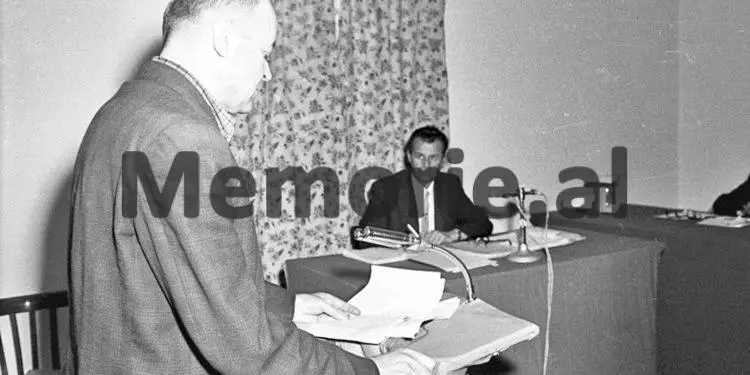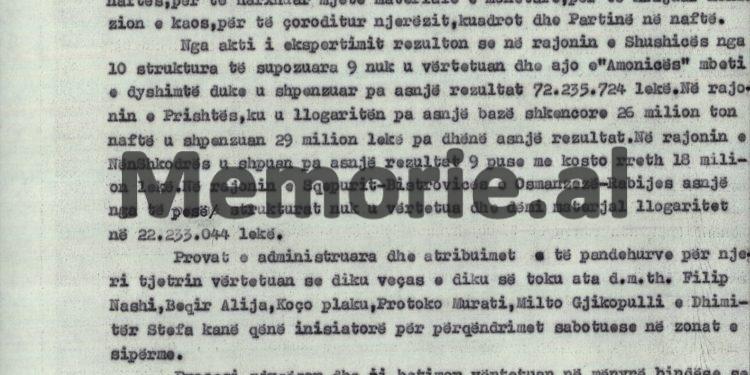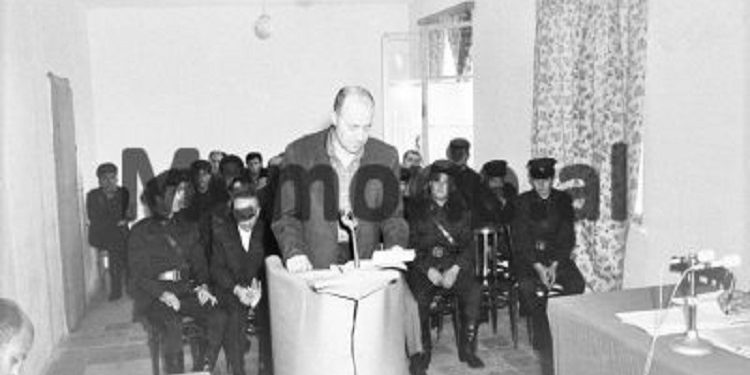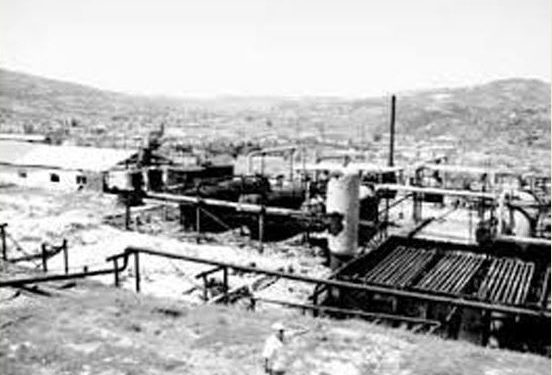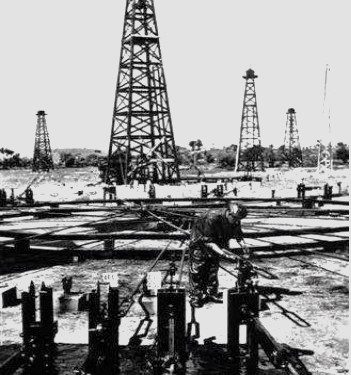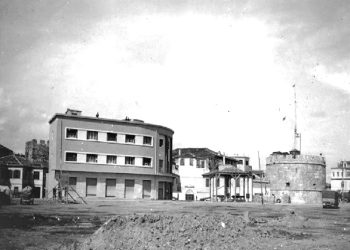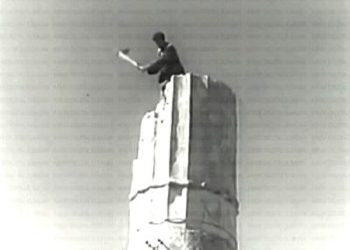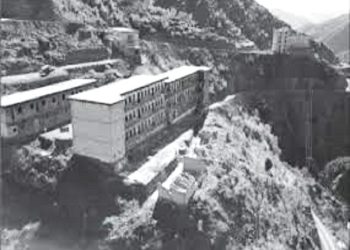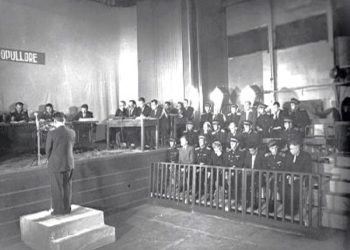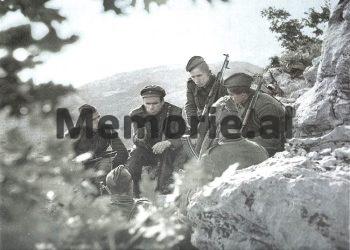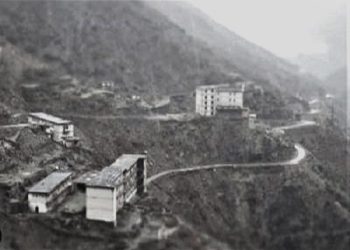By Dashnor Kaloçi
Part Nine
Memorie.al/ From the end of November 1944, when he officially came to power, until his death in 1985, the communist dictator Enver Hoxha, wanting to resemble his idol, Iosif Vissarionovich Stalin, and following his “path,” occasionally undertook purges in the high leadership of the PPSH (Albanian Party of Labour). He had practically started this since 1941, with Anastas Lula and Sadik Premte, continued with Koçi Xoxe (and his group) in 1948-49, and ended it in 1981-82 with the so-called “Hostile Group of Mehmet Shehu and Kadri Hazbiu.” In this time span of more than four decades, as is already known, he eliminated almost all the founders of the Albanian Communist Party, members of the Political Bureau of the Central Committee of the PPSH, and the main leaders of the so-called “National Liberation Anti-Fascist War.” As a result, from 1960 until the collapse of the communist regime in 1990, only Pilo Peristeri had escaped imprisonment or internment, enjoying privileges as a perpetual candidate of the Political Bureau and the function of director of the “Enver Hoxha” Autotractor Combine!
However, unlike what he had done until the beginning of the ’70s, where Enver Hoxha’s “sword” had fallen mainly on the high leadership of the PKSH (Albanian Communist Party), (Koçi Xoxe, Kristo Themelko, Sotir Vullkani, Ramadan Çitaku, Tuk Jakova, Bedri Spahiu, Liri Gega, Gjin Marku, Koço Tashko, Liri Belishova, etc.), whom he had accused of “deviating from the Party line” and condemned as “traitors and enemies of the people,” in the mid-’70s, the dictator Enver Hoxha began to strike against some members of the Political Bureau who also held ministerial posts, such as Abdyl Këllezi and Koço Theodhosi, accusing them also of being “saboteurs” of the Socialist Economy!
And just as he had done with Beqir Balluku, Petrit Duma, and Hito Çako, (who were sentenced to death and executed), where, to prove their “hostile activity,” Enver Hoxha also sentenced a large group of senior officers to prison and internment, with the so-called “Economic Sabotage Group,” which, in addition to Këllezi and Theodhosi, also included the two ministers Kiço Ngjela and Vasil Kati, some senior officials of the Trade sector, well-known directors and specialists such as Andrea Manço, Ahmet Jegeni, Bardhyl Frashëri, etc., as well as the Oil sector, were accused and convicted, such as; well-known leaders, engineers, and specialists, such as; Filip Nashi, Beqir Alija, Koço Plaku, Milto Gjikopulli, Protoko Murati, Dhimitër Stefa, Jani Konomi, Nuredin Skrapari, etc.
As we will see in the documents in question, the investigative process against the so-called “Hostile and Sabotage Group of the Economy,” which had been carried out by the Ministry of Internal Affairs and the State Security, with fabricated accusations and false testimonies or those obtained under torture, etc., was also continued by the Supreme Court of the People’s Republic of Albania, headed by Aranit Çela, “channeling” the accusations from the “legal” side as well, to “prove” what Enver Hoxha had said in the Plenums of the Central Committee of the PPSH against Abdyl Këllezi, Koço Theodhosi, Kiço Ngjela, Vasil Kati, etc.
Regarding all these people, after the ’90s, much has been said and written, by members of those “groups,” their family members, etc., etc. Memorie.al has secured the archival documents of the Supreme Court of the People’s Republic of Albania of that time and the former Presidium of the People’s Assembly, where the “Hostile Group of the Economy,” “Trade,” and “Oil,” were reviewed. These documents are being published for the first time, and we are publishing them in several issues, along with the corresponding photos and facsimiles.
In the first and second parts of this series of articles, we are publishing the documents that talk about the former director of Makinaimport, Andrea Manço, originally from the village of Boboshtica in Korça, whose brother, Todo Manço, had served for years as the chief engineer and director of the Bulqiza chromium mine, and also as a member of the People’s Assembly for several legislatures. When he passed away on November 6, 1974, a magnificent funeral ceremony was held for him, with homages in the center of the capital, where in addition to Enver Hoxha, all the high leadership of the PPSH, led by Prime Minister Mehmet Shehu, participated. While all these honors would be given to Todo Manço, (“Hero of Socialist Labour”), his brother, Andrea, almost two years later, would be tortured in the cells of the State Security and sentenced to death, by firing squad, as an “enemy of the people” and “agent of foreign agencies,” and his grave has still not been found!
Continued from the previous issue
DECISION OF THE SUPREME COURT, PRESIDED BY ARANIT ÇELA, SENT TO THE PRESIDIUM OF THE PEOPLE’S ASSEMBLY, REGARDING THE CONVICTION OF THE “HOSTILE GROUP” IN THE OIL SECTOR, LED BY FILIP NASHI, BEQIR ALIJA, KOÇO PLAKU, MILTO GJIKOPULLI, ETC.
REPORT
PEOPLE’S REPUBLIC OF ALBANIA
SUPREME COURT
No. 381
Tirana, June 21, 1976
To the Presidium of the People’s Assembly
Tirana
PEOPLE’S REPUBLIC OF ALBANIA
SUPREME COURT
No. 12, Main Register
No. 13 of the Decision
DECISION
IN THE NAME OF THE PEOPLE
The Supreme Court of the People’s Republic of Albania composed of:
Chair of the session: Eleni Selenica, Deputy Chair of the Supreme Court
Deputy Judge of the session: Mitat Goskova
Deputy Judge of the session: Fehmi Legreta
Assisted by the secretary Sadik Mema, with the participation of Prosecutor Sotiraq Samara, Deputy General Prosecutor, from June 11-17, 1976, reviewed in a closed court session, criminal case No. 12 concerning the defendants:
The defendants’ participation in the sabotage of geophysical works, and especially seismic ones, was extensive. The main instigators of this criminal, hostile activity were Filip Nashi and Beqir Alija, with Protoko Murati, Koço Plaku, Milto Gjikopulli, and Dhimitër Stefa also acting. They approved and designed deep wells in the Scientific Council or outside of it without any geophysical or seismic work. The degree of guilt of the defendants Filip Nashi and Beqir Alija was greater.
The defendant Filip Nashi, in collaboration with the convicted Andrea Manço, bought the electronic computing center from branches of the American firm “Geospas” in Texas, USA, located in the Federal Republic of Germany, openly opposing our State’s policy, which does not allow any kind of agreement of any character with the two superpowers. The defendant Filip Nashi bought this computing center with serious flaws, without its two programs, and without the field equipment. He and the defendant Beqir Alija, with the intent of sabotage, did not plan the necessary equipment for the seismic work plan and did not take measures to utilize all the existing tools and devices.
The defendants of the saboteur group, led by Filip Nashi, also put their hostile views regarding the complex of geological-geophysical works into regulations and documents such as: the Regulation “On geological-geophysical works and studies during the drilling and exploitation of oil and gas wells,” prepared by defendants Beqir Alija and Dhimitër Stefa, as well as; “Analysis and methodology of oil and gas exploration works for the period 1961-1972,” where deeply anti-scientific views on complex Geological-geophysical works are openly displayed. The idea is put forward that these works (especially seismic ones) are not always necessary for preparing structures, and deep structural wells are legalized as an integral part of complex geological-geophysical works. Thus, in addition to their practical actions, the defendants also deepen the sabotage with “theoretical” views.
The judicial and investigative processes proved that the defendants of the saboteur group, by opposing point 1 of Chapter 1 of the Political Bureau of the Central Committee’s decision No. 154, dated November 10, 1967, and with the aim of deepening the sabotage in the oil sector, abandoned the Neogene structures, justifying themselves by saying they wanted to find wells with large outputs, while sandstones have small outputs.
Throughout the entire Fifth Five-Year Plan, they gave only 10 wells for oil exploration in sandstones. Even when the enterprise’s geologists requested to attack the Neogene structures in Kallm – Verri, Kolonjë, Arapaj, Qyteti Stalin, and Kozarë, the defendants ignored their opinions and proposals, to the point that at the Scientific Council meeting on April 3, 1968, it was decided to definitively abandon the Neogene zones.
Among other things, the defendant Filip Nashi stated that the withdrawal from Kallm-Verrija was a great sabotage under the pretext that they wanted to find regions and wells with large outputs, and that Beqir Alija, without excluding Protoko Murati, Koço Plaku, and Milto Gjikopulli, was more negative, stating: “these (sandstones) are small, minor things that do not carry weight and for which we should not have optimism”!
Wanting to create the impression that they were “working” to discover oil and gas fields, that they were “fighting” to realize the tasks of the Fifth Five-Year Plan, that they were “implementing” the Party’s guidelines to boldly move to new structures away from existing fields, the saboteur group led by the defendant Filip Nashi, in collaboration with the other defendants, deepened their criminal sabotage activity by scattering and spreading out in many regions of our country, without the necessary preparation, without complex geological-geophysical studies, and in flagrant contradiction to the principle of moving from the known to the unknown.
The judicial and investigative processes, based on the statements of a series of witnesses, numerous written documents, the expert report, and the confessions of the defendants themselves, convincingly proved that the concentration in the regions of Shushica, Prishta, Nënshkodra, Bistrovica, Osmanzezë, Rabija, Kozar, and in the regions around the existing fields (Visokë, Ballsh, Gorisht), in flagrant contradiction to the principle of moving from the known to the unknown, was done to further deepen the sabotage in the oil industry, to waste material and monetary resources, to create confusion and chaos, and to disorient the people, the cadres, and the Party in the oil sector.
The expert report shows that in the Shushica region, out of 10 supposed structures, 9 were not confirmed, and that of “Amonica” remained doubtful, with 72,235,724 ALL being spent without any result. In the Prishta region, where 26 million tons of oil was calculated without any scientific basis, 29 million ALL were spent, yielding no result. In the Nën Shkodra region, 9 wells were drilled without any result, at a cost of about 18 million ALL. In the Sqepuri-Bistrovica and Osmanzezë-Rabija regions, none of the five structures were confirmed, and the material damage is calculated at 22,233,044 ALL.
The evidence administered and the attributions of the defendants to each other proved that, sometimes separately and sometimes together, they, that is; Filip Nashi, Beqir Alija, Koço Plaku, Protoko Murati, Milto Gjikopulli, and Dhimitër Stefa, were the initiators of the saboteur concentrations in the aforementioned areas. The judicial and investigative processes convincingly proved that the saboteur group led by Filip Nashi extended their wide-scale sabotage to the Saranda area.
The defendant Filip Nashi, in implementing the sabotage plan for this area, came out with the slogan that; “whoever hesitates on the issue of Vurgu of Saranda is a saboteur.” This great sabotage, which unfolded in three stages, was carried out with large concentrations of probes, aggregates, and human forces, creating an unbridled euphoria with the aim of deceiving the working class, the Party, and the Government.
In the first stage, although the Vurgu-1 well, during its exploitation, did not yield oil with industrial flow, as resulted from the evidence, the defendant Dhimitër Stefa urgently drafted the “preliminary project for the discovery of the oil bed in the Vurgu structure,” a project which was approved by the Scientific Council on October 18, 1970. The reserves of the C-1 category of oil for the Kranea structure were calculated, a reserve that was also presented in the 1972 balance sheet.
After this, based on a structural scheme, with nothing written and without review, the defendants; Beqir Alija, Koço Plaku, Protoko Murati, Milto Gjikopulli, Dhimitër Stefa, and Nuredin Skrapari, ordered by the defendant Filip Nashi, recommended the opening of a series of wells, to the point that the “Fitore-1” and 2 wells were designated and given on the ground without any study material and without going through the Scientific Council.
In the second stage, which begins after the exploitation of the “Vurgu-6” well, which yielded gas with very small quantities of condensate, the defendants Protoko Murati, Dhimitër Stefa, and Nuredin Skrapari drafted the report; “On the discovery-outlining of the bed in the Finiq structure” – and the design of the Bistrica 1/5 well (January 1973), where the “Vurgu-6” well and the Finiq field itself, contrary to the facts, are treated as an oil field with a gas cap. Based on this fictitious report, a large number of wells were designed and given for drilling, which yielded no results.
As stated in the expert report, the main stage of the sabotage in Vurg, (the Finiq area), begins with the exploitation of the “Vurgu-5” well, which was closed after 4 days, yielding salt water. Although this well was not studied and the necessary measurements were not made, the defendant Beqir Alija drafted the report addressed to the General Directorate of Oil, “On the need for intensified measures for the exploitation of the Finiq field,” dated August 4, 1973, where, among other things, extraordinary measures are proposed, namely; “the immediate start of drilling of exploitation wells, without waiting for the drafting of the processing scheme.
Taking measures for the maximum concentration of exploitation-drilling probes, the earliest possible preparation of the field with concentrated strikes, to meet all the demands that arise, such as surface constructions, the storage and collection of oil, transportation, etc.” This report is one of the many documents that prove the wide-scale sabotage in the Saranda area, after which mass constructions, the assembly of probes and aggregates, the drilling of wells, and the planning of oil and gas started without any basis. To conceal this sabotage documentarily, because the sun cannot be hidden with a sieve, the defendant Beqir Alija intentionally falsified the date of the report from August 4, 1973, at which time the “Vurgu-5” well was closed, to July 28, 1973, at which time the well was yielding oil and gas by natural flow. It was proven that many meetings were organized to give many points, until it was even planned to extract oil from the Finiq field for the year 1974, equal to 270,000 tons, despite the rightful objections presented by the directorate of the Drilling-Exploitation Enterprise, Saranda.
The defendants Filip Nashi and Beqir Alija played a special role in this sabotage. The defendant Filip Nashi stated that he and Beqir Alija, in the concentration in the Vurgu region, “were the initiators, programmers, instigators, and leaders for all the works that were done in this region. And all this activity was carried out with the aim of sabotaging the further development of the oil industry.”
This fact is also reinforced by the statements of the defendant Koço Plaku, who says that; “Lipja, with a group of specialists, from the top of a hill in Finiq, designated the places where the exploitation wells would be drilled, where the reservoirs would be placed, where the pipelines would be placed”! The expert report, in addition to the confessions of the defendants and the explanations of the witnesses with arguments, proves that in the concentration in the Saranda area, as well as in other areas, we are facing a widespread sabotage activity.
From the evidence, it resulted that the degree of guilt of the defendant Nuredin Skrapari, regarding the sabotage in the Saranda area, is great. Assigned as the head of the surveying group by the defendant Beqir Alija, he compiled the geological map for the Vurgu region in 1972, based on which many points were given for drilling. Being an enemy element of the people’s power, the defendant Nuredin Skrapari found a convenient opportunity to deepen his sabotage activity. With the intent of sabotage, he does not reflect the reality of the various phenomena he observes in the field on the map.
This map, although it was known not to reflect reality, was approved by the Scientific Council by the defendants Beqir Alija, Koço Plaku, Protoko Murati, Milto Gjikopulli, and Dhimitër Stefa. The shortcomings of the map, which would have serious consequences, were known by the defendants Protoko Murati and Dhimitër Stefa. However, they, along with the other defendants, were also informed about them in the Scientific Council by the witness Napolon Mërtiri. With hostile intent, they did not dwell on the great gaps in the map, and by approving it; they turned it into a basic document for their sabotage activity./Memorie.al




